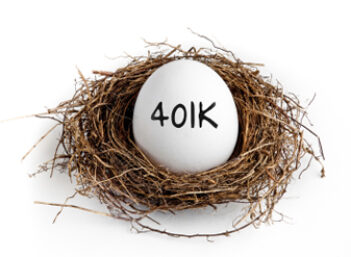For years, when my wife and I went to invest in our IRAs, I was frustrated by not being able to take advantage of the Roth IRA due to our income levels.
Then, in 2010, a new law changed everything...
It allowed for something that is now referred to as a backdoor Roth.
How is it done?
I'll explain in a minute, but first, let's take a look at the basics of a Roth.
A Roth is a retirement savings vehicle. With it, you contribute after-tax dollars, and your money grows tax-free, with no taxes payable on withdrawal.
There is a catch, though: Along with this great benefit of tax-free investment growth comes limits on who can contribute.
To qualify to contribute the full amount to a Roth, your adjusted gross income (AGI) must not be more than $112,000 for individual filers and $178,000 for married couples filing jointly, as of 2013. That means those with high incomes are out of luck, right?
Not anymore.
High-income earners can't get in the front door with a Roth, but if they are willing to take a few extra steps to get around to the back door, they can still get in!
In 2010, the income requirements for converting a traditional IRA to a Roth IRA were removed. That means you can convert a non-deductible traditional IRA to a Roth with no income limits.
That's what they call the backdoor Roth IRA.
How a Backdoor Roth IRA Works
Contribute to an IRA: In order to make this non-deductible, you simply fill out some extra tax paperwork (Form 8606) when tax time comes. That way, you pay taxes on what you put in today -- instead of taking a deduction for your contribution -- but you don't have to pay taxes on that portion of funds when you withdraw the money.
Immediately convert your contribution from your non-deductible IRA to a Roth IRA: Typically, you can't do this on the same day, but you can do it within days depending on the rules for your brokerage company for clearing transactions. With the two brokerage houses we use, I can do this entire process online.
And that's it.
Still, as with anything involving taxes, there are some things to be cautious of and lots of things to consider as you make the move. Because everyone's financial situation is different, you should work with an accountant to make sure you're not missing anything in your own finances that would make this conversion a problem.
Other Questions to Consider
Will you really be over the income limits? Unless you are 100% certain that your income will be over the income limits, wait until the end of the year to do this. Otherwise, you will have to do a recharacterization back to a traditional IRA. (This is where you reverse your conversion.) While not a difficult process, it requires more paperwork.
Do you have other traditional IRAs? If you have other traditional IRAs, this might not be the right financial move for you. That's because the IRS requires you to calculate your cost basis using a pro rata formula. The IRS treats all your IRAs as one, even if they're with different companies. This means you must add the value of all of your IRAs together to figure out what portion of the non-deductible contribution is getting converted. Thus, if you have a traditional IRA with $30,000 in it, and you made a non-deductible contribution of $5,000, your non-taxable conversion would only be $714 and not the $5,000. As an example, I have only Roth IRAs, so I can easily do a backdoor Roth. My husband, however, has multiple traditional IRAs from 401(k) rollovers. We don't do a backdoor Roth for him, as this would require lots of tracking and too much money upfront in taxes for a full conversion. Will extra tax payments be needed? There might be a small amount of taxes to pay on your earnings depending on what happens in the market between the time you make the non-deductible contribution and when you make the conversion. I keep this from becoming a large concern -- and avoid transaction fees -- by investing in a money market when I make the non-deductible contribution. Then, when I make the conversion, I move to the investment that I do want to make. With just a couple of days between transactions, this typically creates almost no gain.
The Investing Answer: As a high-income earner, with a few more transactions and planning, you can get the benefits of a Roth for your retirement savings. It might take some extra steps and paperwork, but it is more than worth the tax savings.



